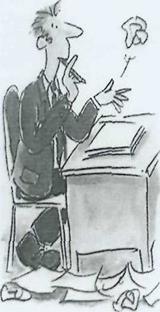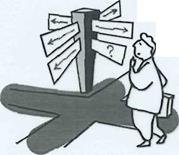Always check that you have actually enclosed the documents you have mentioned in your letter. And check that you have enclosed the right documents: if, for example, you say in the body of the letter, that you are enclosing 'our leaflet PB/14', do not then enclose leaflet PB/15. Or, when sending a covering letter with an order, make sure you have quoted the order number accurately in your letter.
 |
1 Include just the right amount of information in your letter. (But better to include too much than too little.)
2 Plan your letter before you start writing, to make sure it says everything you want to say and says it in a logical sequence.
3 Use a simple but polite style of language. Beware of idioms.
4 Your letter should be clear and unambiguous. Take care with abbreviations and figures.
5 Accuracy is important. Pay special attention to titles, names and addresses, references, prices and specifications, enclosures.

length
order and sequence
style and language
clarity
colloquial language
abbreviations
a statement
idioms
accuracy
to draw attention to something
to point out something
to make a point
to restate a point
to open a letter
to introduce oneself
to acknowledge an inquiry
to enclose a catalogue
to encourage further contact
to close a letter a sentence
a paragraph
simplicity
courtesy
UNIT 3
Letters on Business Situations
SOME "GOLDEN RULES" FOR WRITING LETTERS AND FAXES
• Decide what to say before you start to write. If you don't, the sentences are likely to go on and on until you can think of good way to finish. In other words, make sure that you plan ahead.

|
• Put each separate idea in a separate
paragraph.
• Use short sentences
• Use short words that everyone can understand. You may be writing to people whose English isn't as good as yours.
• Think about your reader. Your letters should
be...
 Clear - make sure the reader knows exactly what you mean
Clear - make sure the reader knows exactly what you mean

 Complete - make sure you give the reader
Complete - make sure you give the reader
all the necessary information.
 Courteous - write in a sincere, polite tone.
Courteous - write in a sincere, polite tone.
 Correct - the reader may be confused if the are too many mistakes in grammar, punctuation or spelling.
Correct - the reader may be confused if the are too many mistakes in grammar, punctuation or spelling.
 Check your letter through before you print it - and correct any mistakes you find, be sure that you have included all the necessary information: numbers, prices or dates.
Check your letter through before you print it - and correct any mistakes you find, be sure that you have included all the necessary information: numbers, prices or dates.
Part 1
Request Letters






